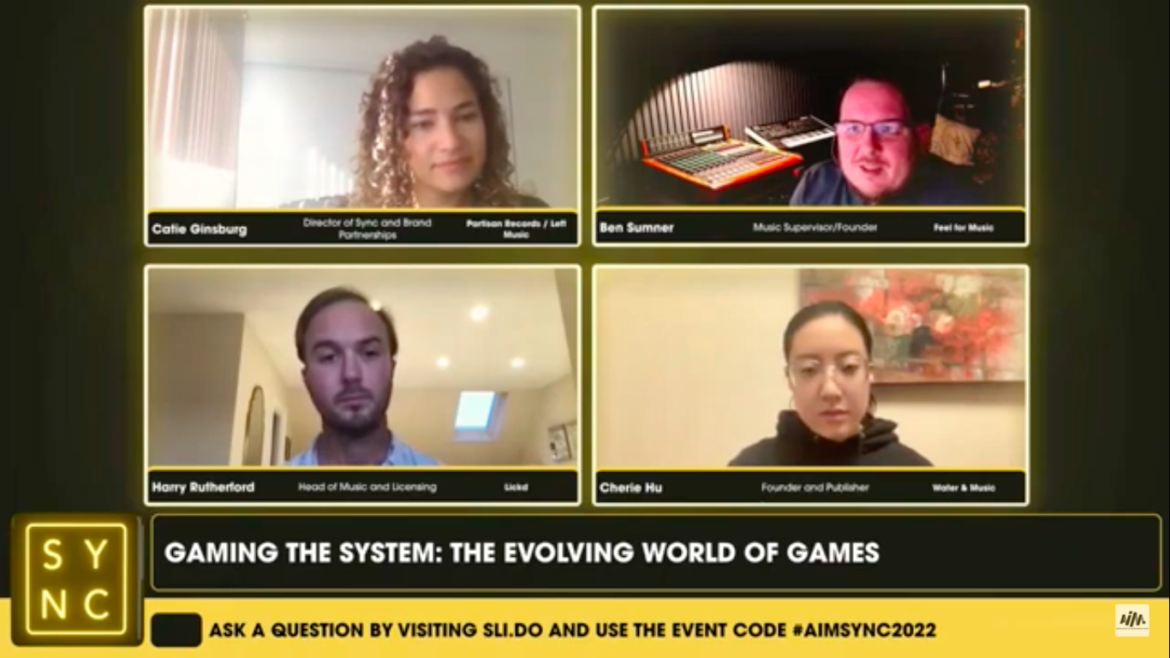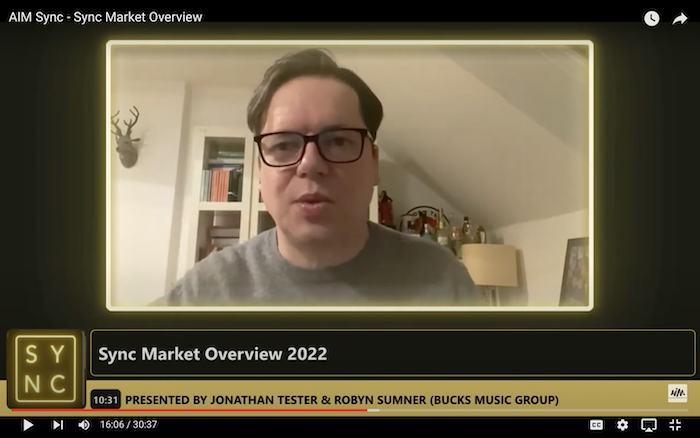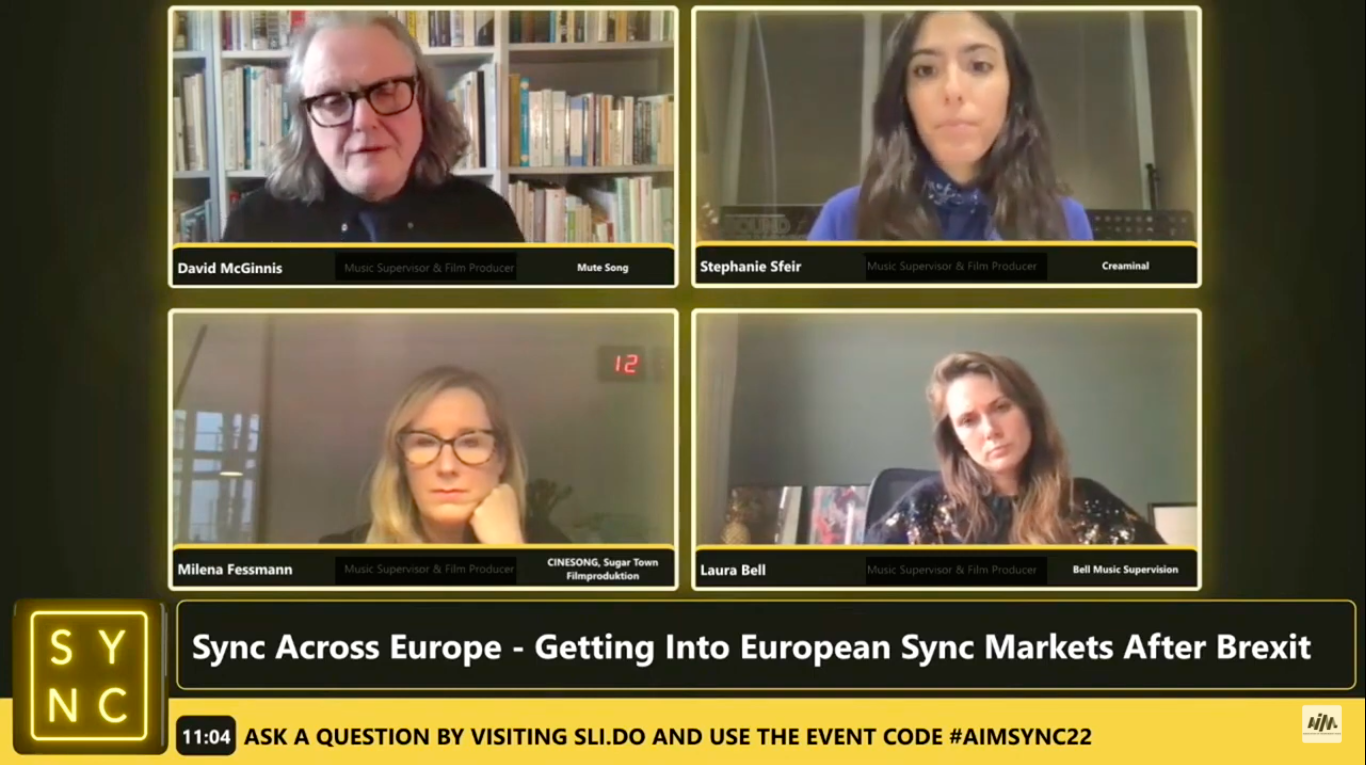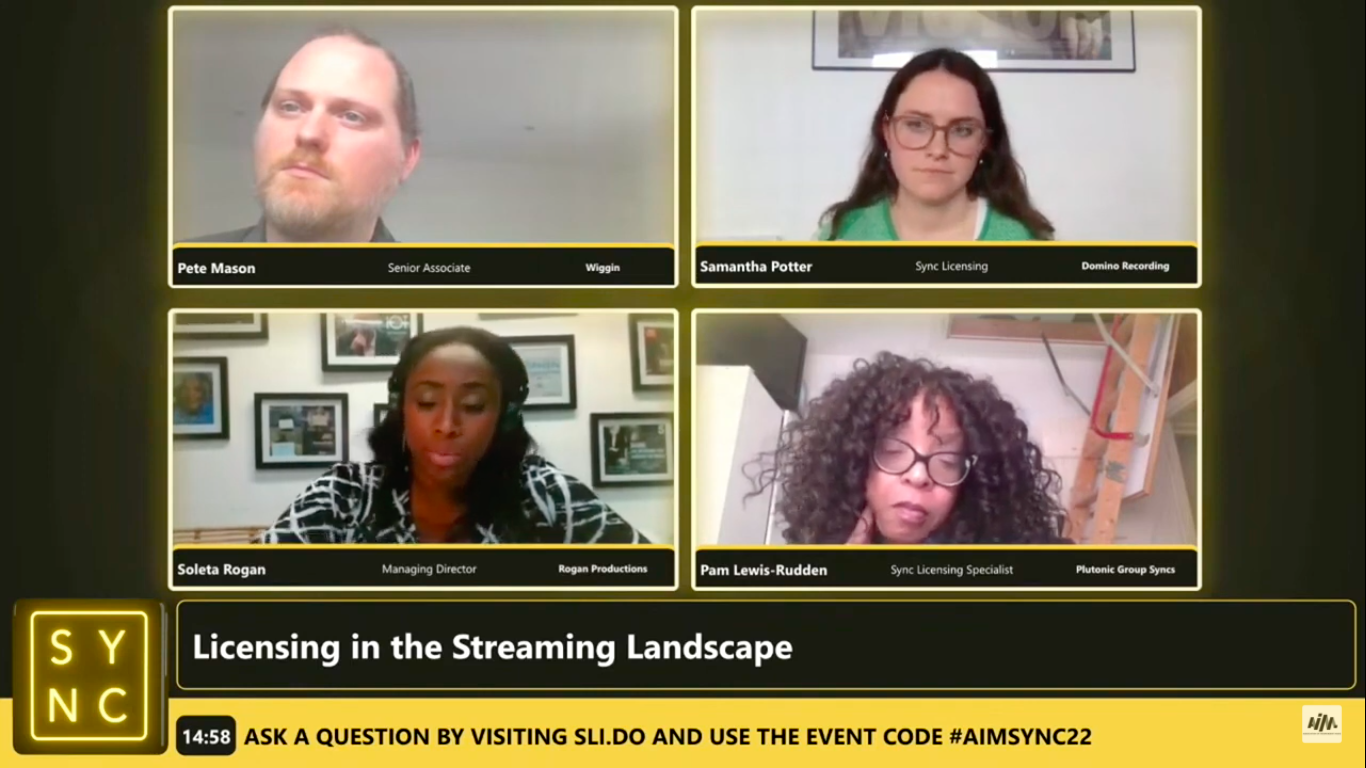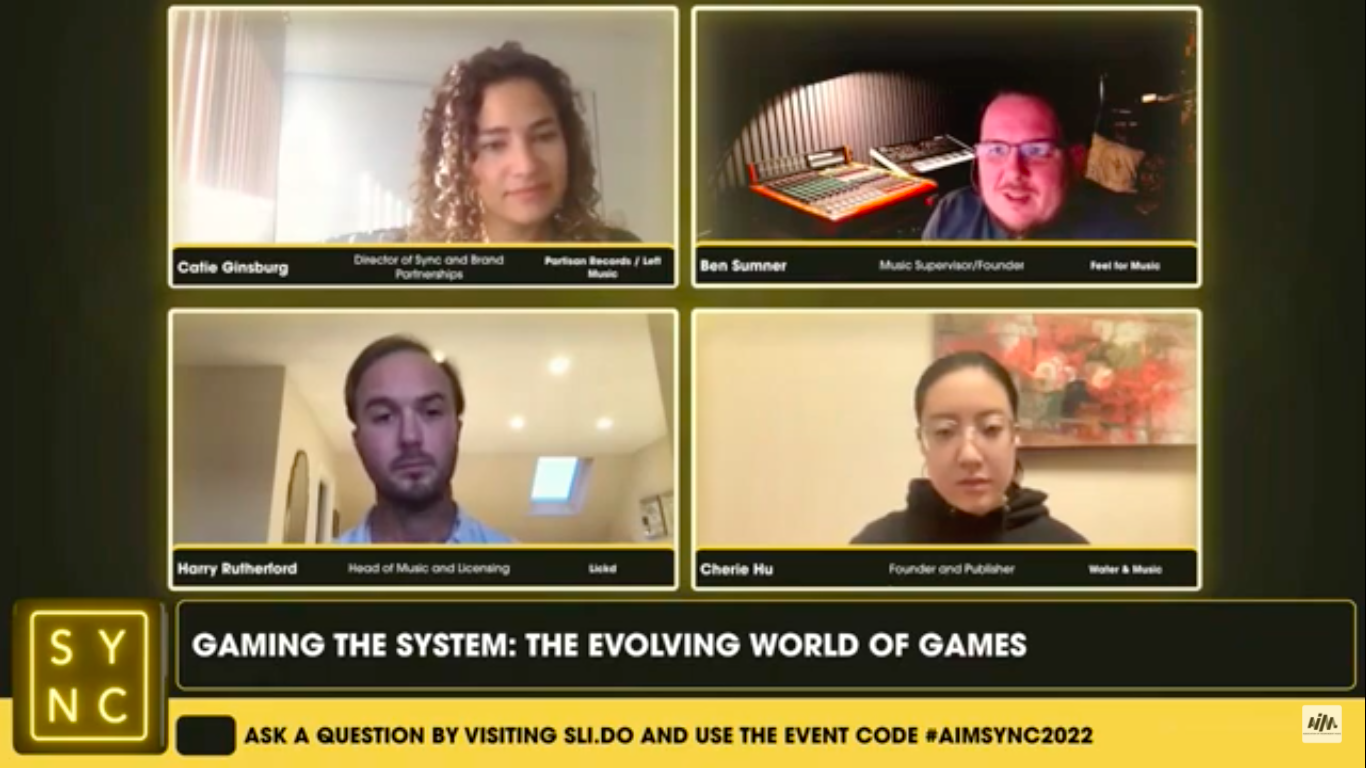AIM Sync is the UK’s leading music sync and licensing conference, attracting music professionals from all over the world. It’s the time of year when the global sync community discusses the business and art of placing music in visual media.
Attendees learn about the latest developments in sync and licensing from panels with music supervisors, sync creatives, licensing managers and entertainment lawyers.
Below we dig into the key takeaways from four of the panels at this year’s AIM Sync, which took place on February 10th.
Sync Market Overview 2022
Jonathan Tester and Robyn Sumner of Bucks Music Group gave attendees a snapshot of the licensing landscape in 2022.
They explained that following the suspension of media production in 2020, there has been a boom in content across the board. Throughout 2021, brands and sports broadcasters found their stride, producing content with confidence and doubling their creative efforts for global audiences. Similarly, there was a rise in terrestrial film and TV. Streaming services have also been ramping up productions of their own content for the past year.
All of this has led to an increased demand in music. The licensing landscape seems to be recalibrating to a pre-pandemic time and is arguably growing exponentially. The best result from this rise in media production, however, has been the interest licensors have shown in independent music and unknown artists.
Sync Across Europe
David McGinnis of Mute Song spoke to three established European music supervisors, Stephanie Sfeir from Creaminal in France, Milena Fessman from Cinesong in Germany, and independent music supervisor Laura Bell in the Netherlands.
A big discussion in this panel centred around the use of Anglo-American repertoire and local-language repertoire. In European territories, music supervisors can find themselves working with both. They need to consider linguistic barriers according to media distribution networks, cultural and geographical context, and audience demographics.
When working on a small Dutch film, Bell reached for a lot of Dutch music as the project was only intended for Dutch viewers and wasn’t expected to travel any further. In the Netflix series Kitz, available in many territories and set in Austria, Fessman sourced German and Austrian music to help communicate the location, culture and setting.
In advertising, however, Sfeir explained that brands use Anglo-American music exclusively as they want to reach a global audience. The only exception to this is when a unique underground fashion label, for example, wants to appeal to a French or European subculture.
Licensing in the Streaming Landscape
Pete Wiggin, Senior Associate at IP law firm Wiggin, spoke with Pam Lewis-Rudden of Plutonic Group Syncs, Samantha Potter at Domino Recording, and Soleta Rogan from Rogan Productions.
Panellists agreed that more risks are being taken when licensing music. The general territorial expansion of production companies and boom in content from streaming services has made them more open to different musical flavours.
The panel also discussed transparency in licensing agreements and buyouts. There have been instances where rights holders find out they are licensing music for a Netflix series only after a lot of the paperwork and licensing terms have been established. It is also not always evident how the music will be used in a production. Potter gave an example of how streaming services might subtitle lyrics or overdub singing to accommodate their international audiences, but this alteration of the work might not be clarified in the licences. In general, the panel stressed the importance of asking licensors the right questions in order to determine a fair fee for their music.
Buyouts were also a part of the conversation and described as something rights holders can’t get away from. They are frequently presented with unfair deal terms, where streaming services will request to buy out certain rights in their music. It’s been a contentious issue and something the Ivors Academy has campaigned against and the CEO of PRS has publicly criticised.
Gaming the System – The Evolving World of Games
Catie Ginsburg from Partisan Music / Left Music spoke to Ben Sumner from Feel For Music, Water & Music’s Cherie Hu, and Harry Rutherford from Lickd.
Panellists all touched upon three key developments in games that we have seen throughout the past year. Live music events in virtual reality game worlds, like the Ariana Grande or Travis Scott performance in Fortnite, are an exciting prospect for both parties. This sector is a brand-new area of licensing and sync standards have yet to be set. Music partnerships is another development likely to grow as the music and games industries work together. The third development is streaming video games content featuring music and the licensing issues it causes, which Rutherford claimed that Lickd has already solved to a large extent. The panellists conjectured that these three developments will only grow in sophistication as both industries continue to collaborate.
Sumner pointed out that although the majors are already active in the aforementioned developing areas, there is plenty of opportunity for independent rights holders to involve themselves. Independent rights holders and independent game developers are in a similar position financially and creatively to do business.
After a quiet 2020 and a slow 2021, music is in high demand as content from streaming platforms, terrestrial media, and games is booming and in constant production. The video games industry is movinwg beyond the standard music sync licence, providing rights holders with the opportunity to licence music within live events, partnerships, and game streaming. Streaming services, brands, and terrestrial media are seeing the value music supervisors bring to their productions and European commercial (non-Anglo-American music) is being placed more frequently in film and television.
